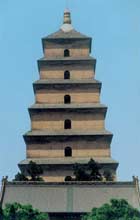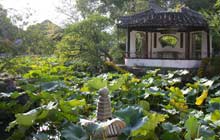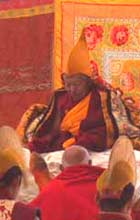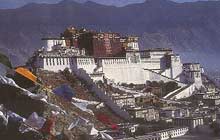The first contacts between adherents of Buddhism and the Chinese people took place along the Silk and Fur roads during the Eastern Han dynasty (8-220AD). Over subsequent centuries these central caravan routes, with Chang'an (near Xi'an) at their eastern terminus continued to serve as the principle avenue by which Buddhism entered China. So significant did this Indian religion become to Chang'an's development that by the eight century the city boasted sixty-four monasteries and twenty-seven nunneries, » Read more »
» Read more »The Chinese consider gardens a serious art form and as with painting, sculpture and poetry aim to attain in their design the balance, harmony, proportion and variety that are considered essential to life. In fact there is a saying which goes, 'the garden is an artistic recreation of nature; a landscape painting in three dimensions" . Through a combination of such natural elements as rock, water, trees and flowers and such artificial elements as architecture, » Read more »
» Read more »History
The Naxi are one of China 's 56 recognized ethnicities, and although they have lived on the edge of the Chinese empire for centuries they have preserved many remarkable features of their culture. Some say the Naxi are descended from a group of people known in Chinese historical texts as the Qiang, whose homeland included parts of the Tibetan Plateau as well as the western areas of Sichuan and Yunnan . » Read more »
» Read more »The three Gelug monasteries of Sera, Drepung and Ganden were known collectively as the "Pillars of the State". As such there was naturally political rivalry between them. This can even be seen in the naming of this monastery. Sera, meaning "merciful hail" is a challenge to Drepung monastery, whose name means "rice heap" in the sense that hail damages rice. This rebellious monastery, some of whose monks were famed for their soldiery last challenged power in 1947. » Read more »
» Read more »The impetus for the construction of a palace on Lhasa's Red Hill came from King Songtsen Gampo (608-650) who commissioned it. This was smaller than its 5-square-mile (13-square-km) successor, which was named the Potala ("Pure Land," or "High Heavenly Realm"), after Mount Potalaka in India, the abode of Tibet's patron saint, the Bodhisattva Avalokiteshvara of whom the Dalai Lama is the incarnation.
In 1645, the Fifth Dalai Lama (1645-1693), feeling confined at Drepung Monastery, » Read more »
» Read more »



